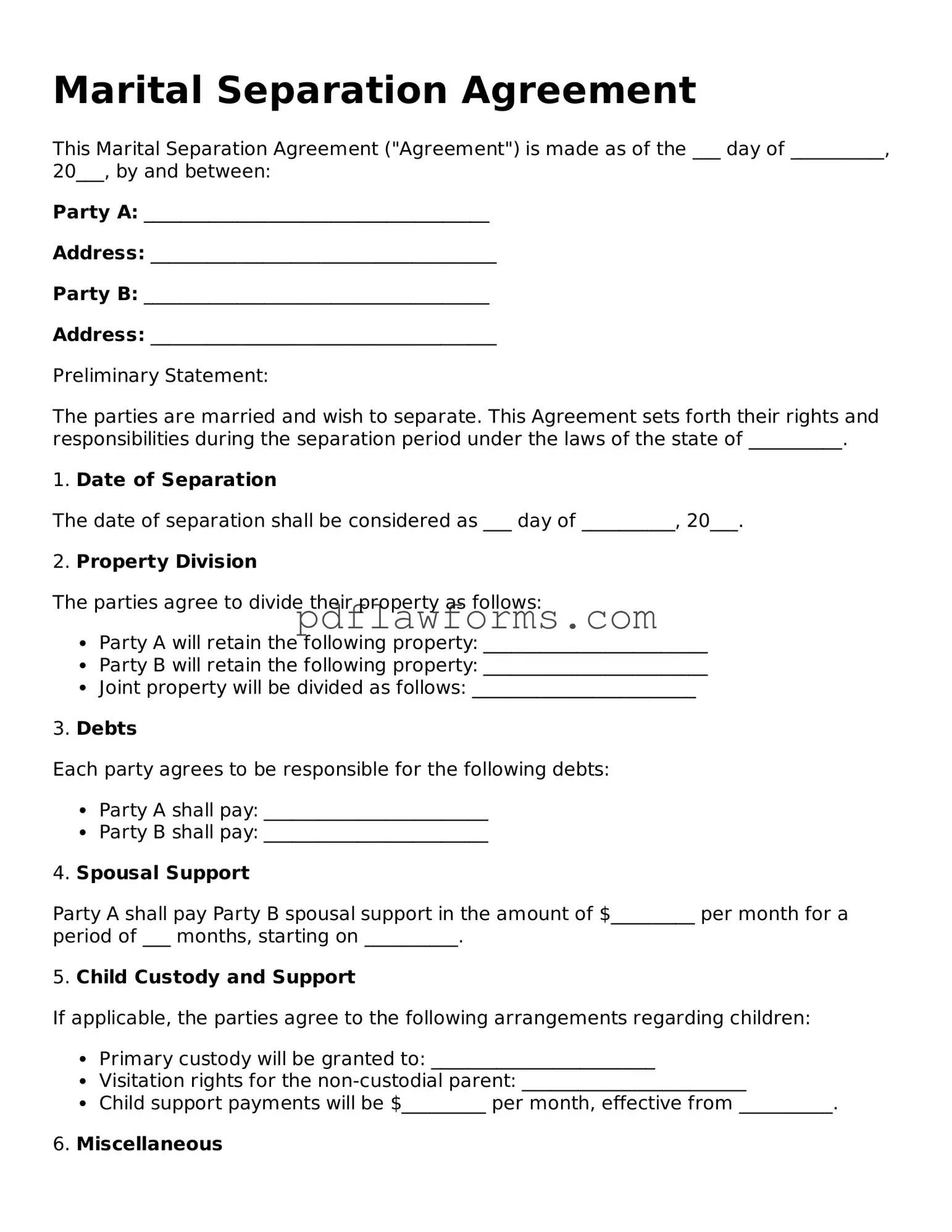When individuals fill out a Marital Separation Agreement form, several common mistakes can lead to complications or disputes later on. One frequent error involves not clearly defining the terms of separation. Ambiguity in language can result in misunderstandings between parties. For instance, if the agreement does not specify who is responsible for certain debts or assets, it may lead to conflict down the line.
Another common mistake is failing to include all relevant financial information. Both parties must disclose their income, expenses, assets, and debts comprehensively. Omitting any financial details can create an impression of dishonesty and may even affect the enforceability of the agreement. Transparency is crucial in ensuring that both parties understand their financial obligations.
People often neglect to consider the tax implications of their separation. Assets may have different tax consequences, and not addressing these can lead to unexpected financial burdens. For example, if one party is awarded a house, they should be aware of potential capital gains taxes when selling it in the future.
Another area of oversight is the lack of clarity regarding child custody and support arrangements. If parents do not outline specific visitation schedules or financial responsibilities for child support, it may result in confusion and conflict later. Clear communication about these matters is essential to foster a cooperative co-parenting relationship.
Additionally, individuals sometimes forget to update their estate plans in conjunction with their separation agreement. Failing to revise wills, trusts, and beneficiary designations can leave individuals vulnerable and may not reflect their current wishes. It is important to ensure that estate planning documents align with the terms of the separation agreement.
People may also overlook the need for legal review before finalizing the agreement. Consulting with a legal professional can provide valuable insights and help ensure that the agreement complies with state laws. Without this step, individuals might inadvertently create an agreement that is unenforceable or unfair.
Lastly, some individuals rush through the process without fully understanding the implications of their decisions. Taking the time to carefully consider each provision of the agreement is vital. Rushing can lead to regrets and disputes that could have been avoided with a more thoughtful approach.
